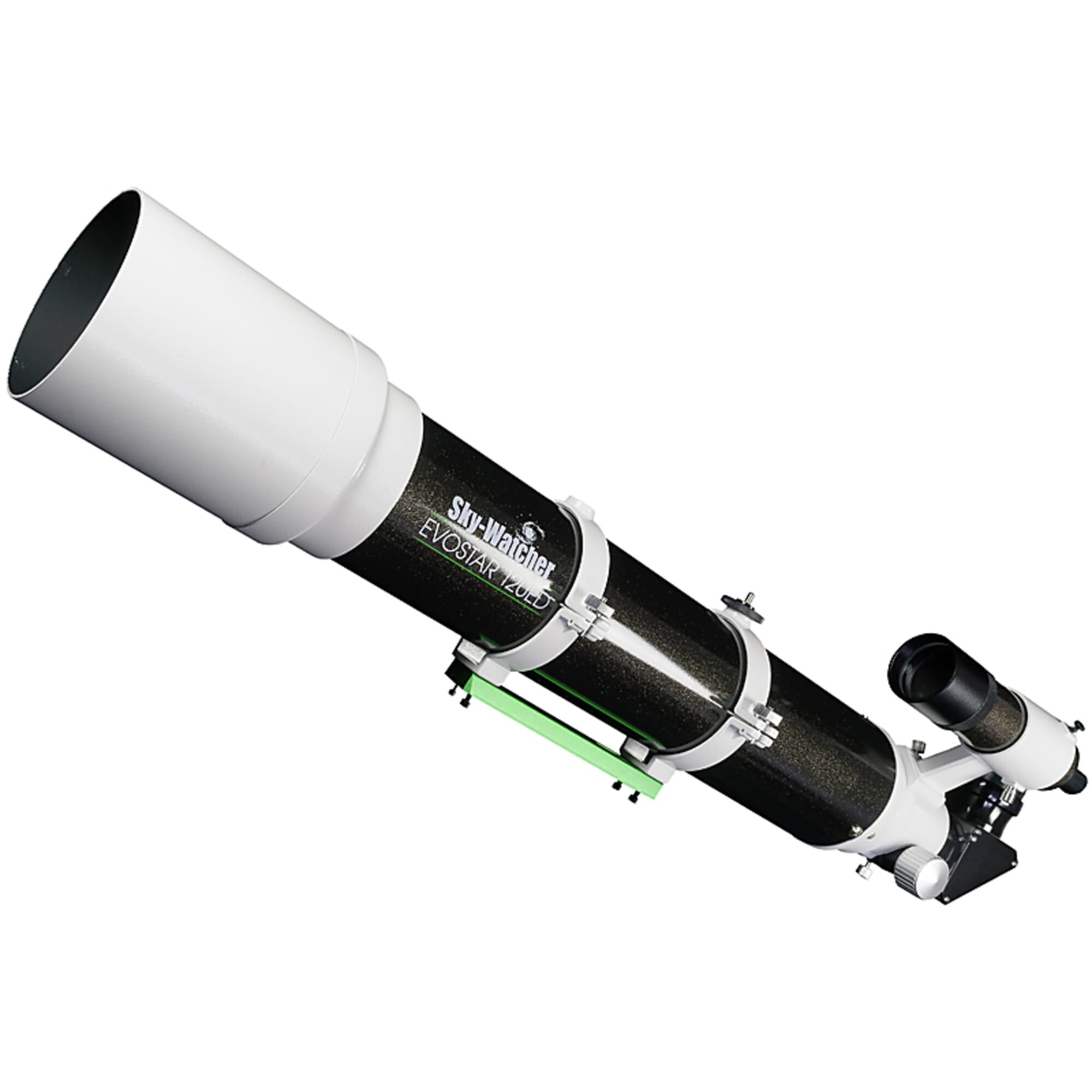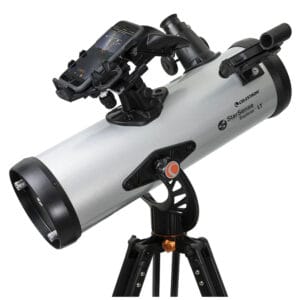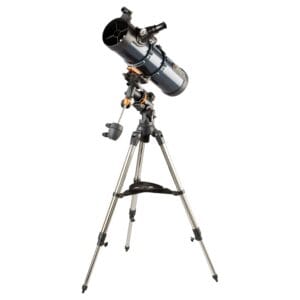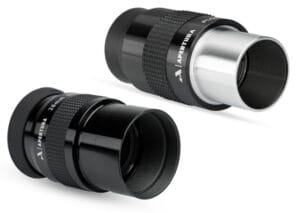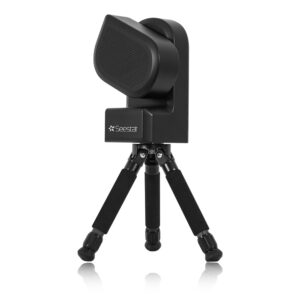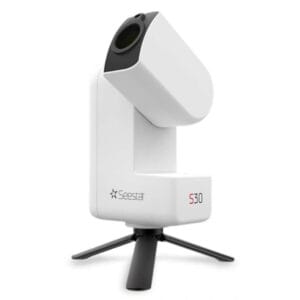A refractor telescope is a telescope that uses lenses to collect light and form an image of objects in the sky. It’s the classic type of telescope that most people imagine: a long, straight tube with a lens at the front and an eyepiece at the back. In this blog, we explain how this system works, what you can see with it, and why it’s a logical first choice for many beginners.
How Does a Refractor Telescope Work?
Unlike a reflector telescope, a refractor uses lenses instead of mirrors. The system consists of:
- Objective lens (front lens) – This large lens at the front of the telescope captures light and bends it to a single focal point.
- Eyepiece (viewing lens) – At the back of the telescope is the eyepiece, which magnifies the focused light so you can view it.
The word “refractor” comes from “to refract”, meaning to bend. Light is bent (or refracted) by lenses, not reflected by mirrors.
What are the Advantages of a Refractor Telescope?
Refractors have several clear advantages, especially for beginners:
✓ Easy to use – straightforward design, no need to align mirrors ✓ Closed system – the tube is sealed, so less chance of dust, moisture, or contamination ✓ Sharp image of planets and the moon – especially with high focal ratios (f/10 and higher) ✓ No collimation needed – no need to adjust optics as with reflectors
Refractors are also excellent for terrestrial observation (landscapes, birds) because the image appears upright when using the correct prism.
What are the Disadvantages of a Refractor Telescope?
✗ Chromatic aberration – cheaper models suffer from color errors (blue/purple fringe around bright objects) ✗ More expensive production – lenses are harder and costlier to make than mirrors ✗ Limited aperture for your budget – for the same money, you can buy a much larger mirror in a reflector ✗ Longer tube for equal focal length – an f/10 refractor is considerably longer than an f/5 reflector
For the sharpest image with minimal color errors, an apochromatic refractor is best, but these are significantly more expensive.
What Can You See with a Refractor Telescope?
Refractors excel at:
✓ Observing the moon in great detail
✓ Viewing Saturn’s rings and Jupiter’s moons
✓ Bright star clusters like the Pleiades
✓ Double stars and planets at higher magnification
Deep-sky objects are also visible, but less spectacular than with larger-aperture reflectors. A refractor is more of a precision instrument than a light bucket.
What’s the Difference between Achromatic and Apochromatic?
An achromatic refractor is the classic basic model that uses two lens elements. These are affordable but may show visible color errors.
An apochromatic refractor (also called APO) uses three or more lens elements made of special glass. This almost completely corrects color aberrations, and the image is extremely sharp – especially for astrophotography.
✓ Achromatic = good for visual use by beginners ✓ Apochromatic = ideal for advanced users and photographers
Which Refractor Telescope is Right for You?
If you’re just starting and mainly want to view the moon and planets, an achromatic refractor with a 70-90mm aperture and f/10 focal ratio is ideal. Consider models like:
- Celestron StarSense Explorer LT 80AZ – easy to use with smartphone assistance
- Bresser Classic 90/900 – classic lens telescope with tripod
Those wanting more from their observing experience or interested in photography should look at:
- Sky-Watcher Evostar 80ED – an ED refractor with high observing quality
- ZWO FF65 APO – a high-end quad-lens telescope specifically for photography
Why Do People Choose a Refractor?
- ✓ No mirror alignment or maintenance needed
- ✓ Suitable for visual and terrestrial observations
- ✓ Classic appearance and robust construction
- ✓ Ideal for planets, moon, double stars, and high-contrast objects
For beginners who just want to observe without many settings or technical complications, the refractor is often the most accessible choice.
What’s the Difference between a Refractor and a Reflector Telescope?
| Feature | Refractor | Reflector |
|---|---|---|
| Light collection | Through lenses | Through mirrors |
| Maintenance | No collimation needed ✓ | Regular collimation needed ✗ |
| Image quality | Very sharp for planets ✓ | Better suited for deep-sky |
| Weight/length | Long and slim ✗ | Short and wide |
| Price/aperture | More expensive per mm ✗ | Less expensive per mm ✓ |
Want to know which suits you better? Read our blog What is a reflector telescope?
Conclusion: is a Refractor Telescope Right for You?
A refractor telescope is perfect for those seeking simplicity, sharp images, and a maintenance-free system. It’s an excellent first step, especially for moon and planet enthusiasts.
✔ Ideal for beginners who want hassle-free viewing ✔ Suitable for observation and landscape viewing ✔ Want more? Consider an apochromatic refractor for photography
→ Want to know more? Check out the range of refractor telescopes at Telescoop.nl or use the telescope selection guide to find your ideal scope.

